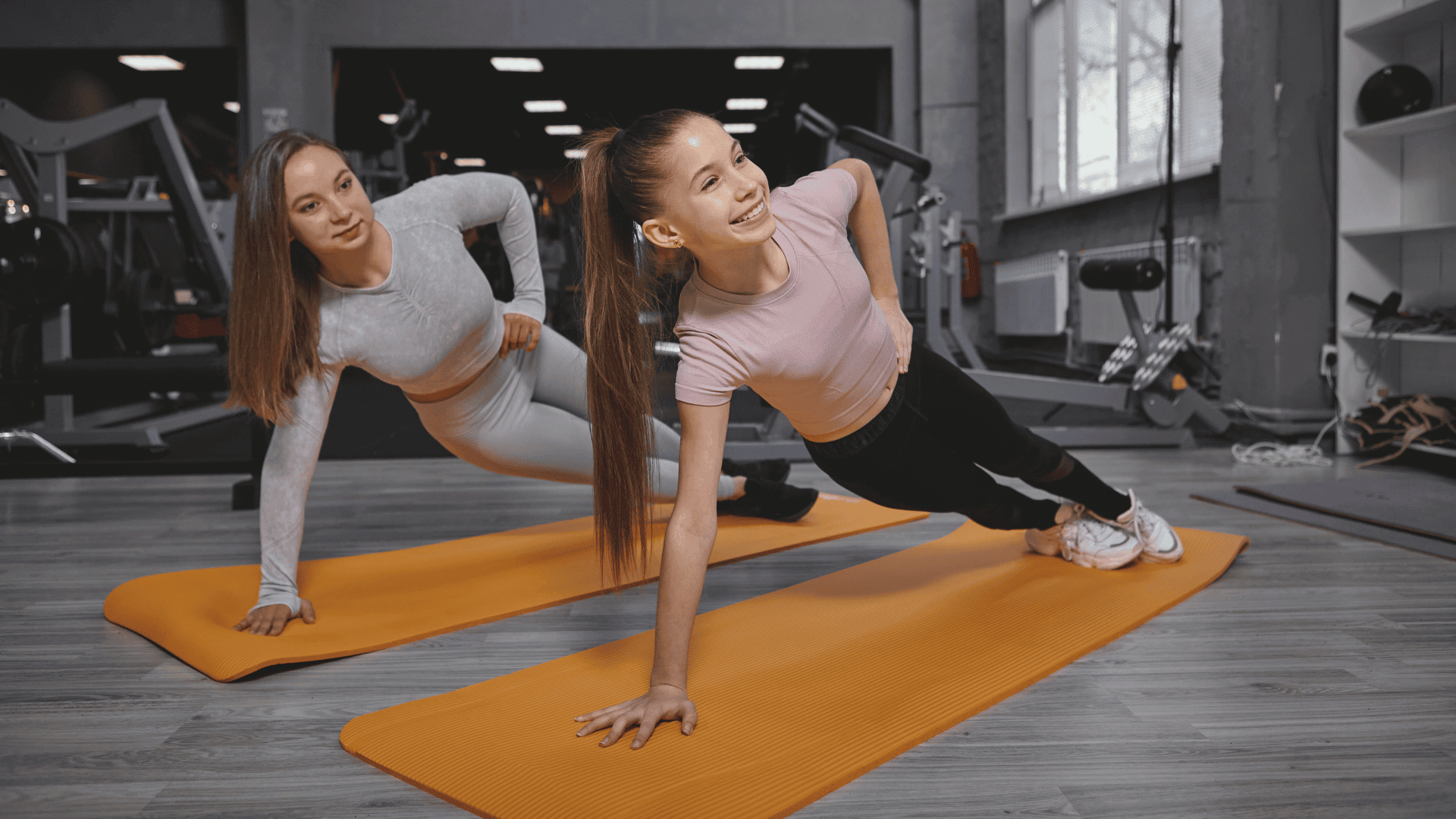Starting a workout routine as a teenager can feel overwhelming.
Should you lift weights, try cardio, or just stick with sports?
And how do you know what’s actually safe for your age and body?
Between gym myths and social media fitness fads, it’s easy to feel unsure before you even begin.
The truth is, teens don’t need intense programs or long hours at the gym to see results. What matters most is building a strong foundation, with the right movements, good form, and smart progressions.
Whether you’re aiming to improve your sports performance, feel more confident in your body, or just stay active outside of school, working out can be simple and fun when the plan is built for you.
In this blog post, you’ll get a complete weekly workout schedule, including machine-to-weight transitions, flexible rest days, fun cardio ideas, and tips to stay safe while gaining strength.
Why a Teen Workout Plan Matters
Starting a fitness routine in your teens is one of the best long-term investments you can make in your health.
Because, it’s not about building a “perfect” body or copying influencers online, it’s about learning how to move well, stay active, and feel strong in your own skin.
Here’s why that matters:
1. Builds Strong Bones and Muscles During Growth Spurts
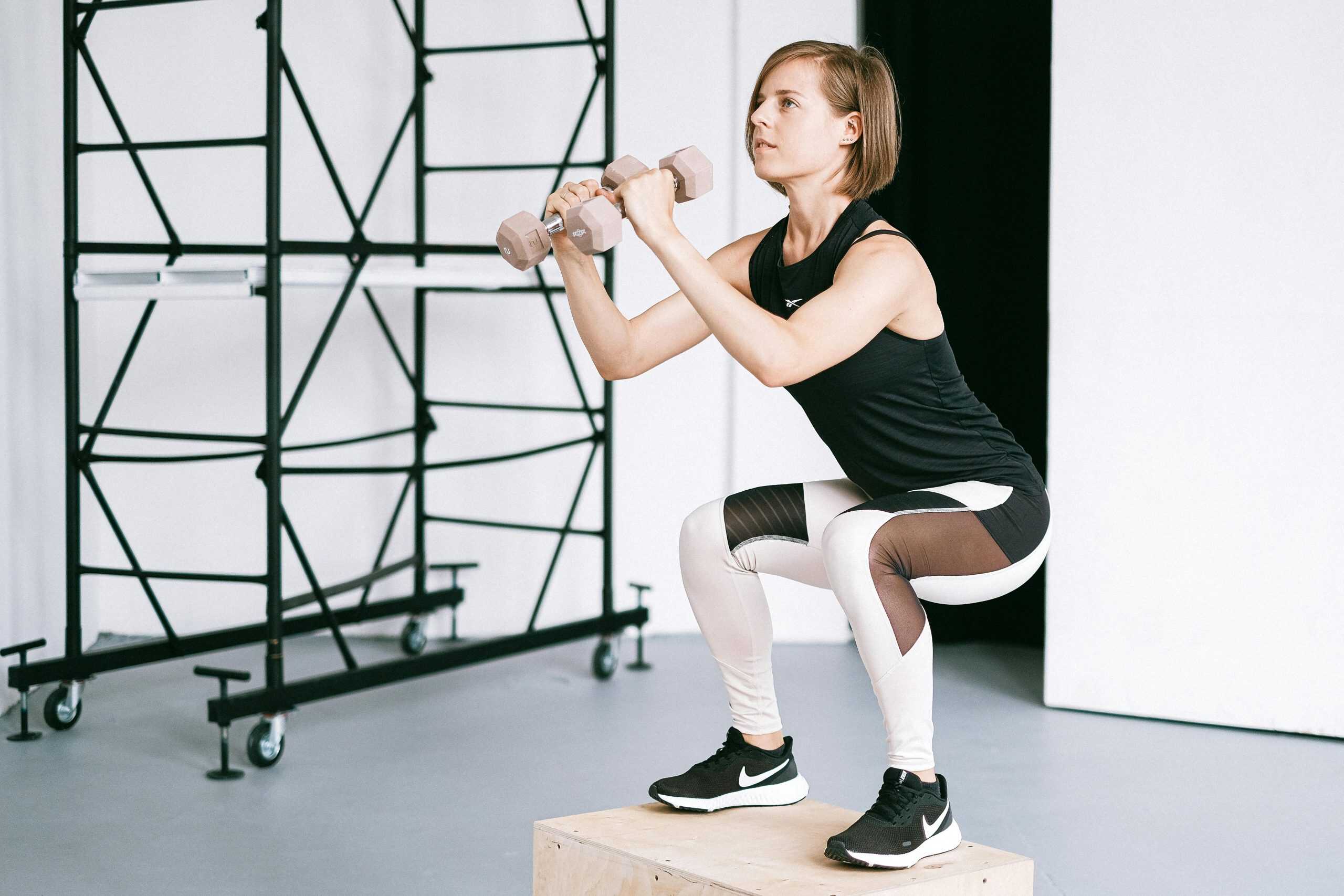
During your teenage years, your body is changing fast. Your bones are growing, muscles are developing, and joints are adapting to new demands.
That’s why this is the ideal time to build strength that lasts.
Weight-bearing exercises like squats, rows, and even walking lunges help increase bone density and muscle tone, reducing your risk of injuries now and even preventing bone loss later in life.
Plus, strengthening your core, legs, and upper body gives you better posture, more balance, and better performance in school sports or everyday life.
2. Boosts Mood and Cuts Stress from School

Feeling stressed before a test? Or, do you feel anxious after a long day? Exercise can help with that.
When you work out, even for just 20–30 minutes, your brain releases feel-good chemicals called endorphins.
These help you feel calmer, more focused, and more positive. Regular movement has even been shown to reduce symptoms of anxiety and depression in teens.
And no, you don’t need to crush an intense gym session to feel the effects.
A light jog, quick dumbbell workout, or playing your favorite sport can all help regulate your mood and improve sleep, something every student could use more of.
3. Sets Healthy Habits That Carry Into Adulthood

Starting a teen workout plan teaches you how to be consistent, not perfect.
You’ll learn how to warm up properly, how to train with good form, and how to build strength in a way that respects your body.
Those lessons don’t end in your teenage years; they build a foundation for lifelong fitness.
Instead of dreading workouts or chasing trends later, you’ll already know how to build a routine that fits your schedule, your body, and even your goals.
Even more, the habits you build now, (like hydration, sleep, exercise, recovery) become easier to maintain as life gets busier.
Quick Look at the Weekly Teen Workout Plan
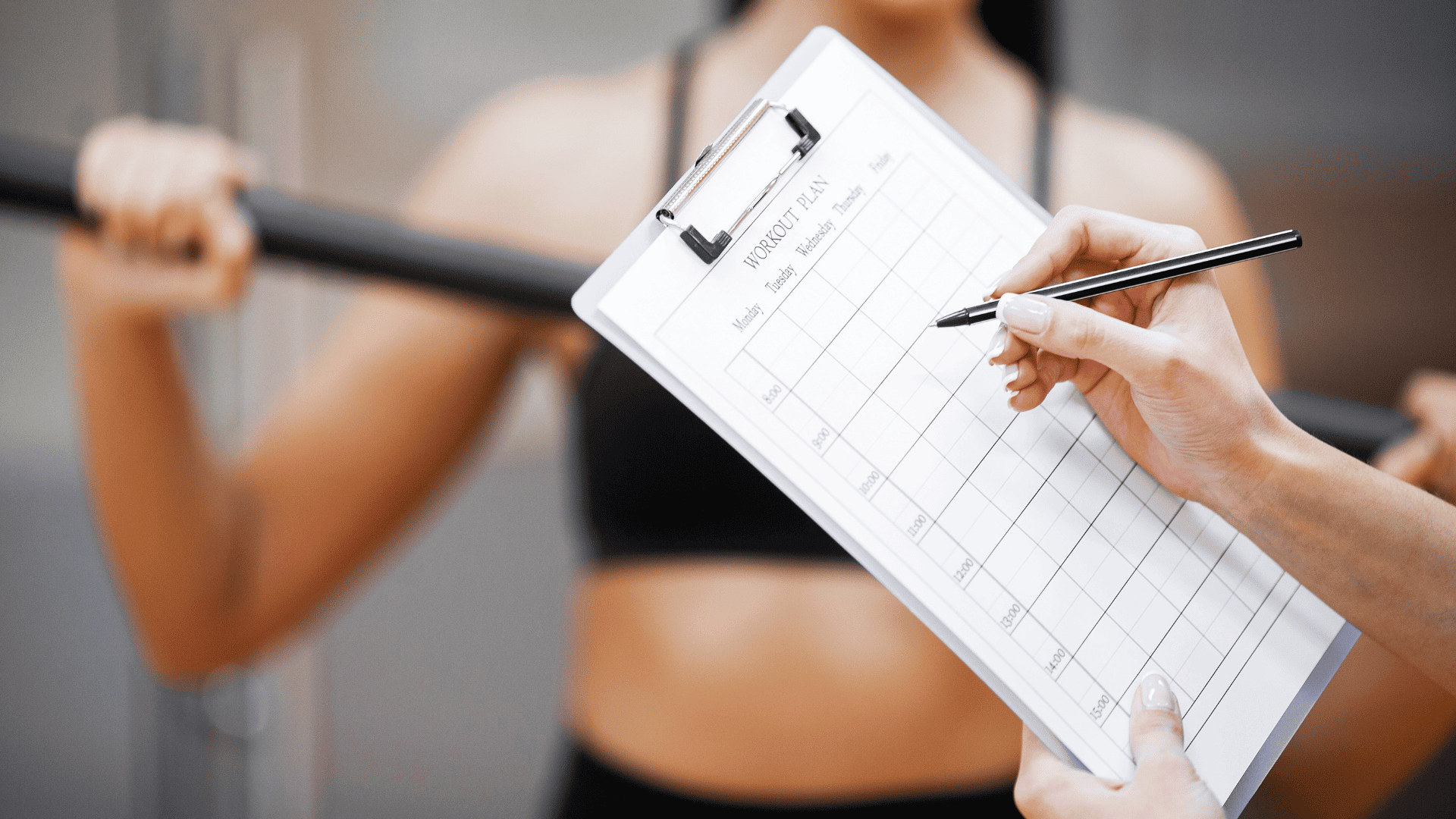
This plan is built to make consistency easy. Whether you’re working out at the gym or staying active at home, the focus is on safe, effective movements that support a growing body.
The schedule balances structure with flexibility, so you can build strength without burning out.
It follows a three-day strength training approach with two to four lighter movement days in between.
That gives your muscles time to recover and grow, while still helping you meet the recommended 60 minutes of physical activity per day.
Below is a simple overview of what a balanced week looks like.
🗓 Weekly Workout Snapshot
| Day | Focus | Details |
| Monday | Full-body Strength (Gym) | Machine-based circuit to learn form and build strength |
| Tuesday | Light Cardio or Sport | Brisk walk, bike ride, or play a school sport |
| Wednesday | Home Bodyweight or Light Strength | Optional home circuit using push-ups, squats, and sit-ups |
| Thursday | Rest or Active Recovery | Stretching, yoga, or foam rolling |
| Friday | Full-body Strength (Gym) | Now using free weights with proper form |
| Saturday | Fun Movement | Hike, dance session, skateboarding, or casual sports |
| Sunday | Full Rest | No structured exercise. Let your body recover |
Why 3 Days of Strength Workouts?
Three focused strength workouts each week is the sweet spot for most teens. It allows time to learn proper technique without feeling overloaded by school, homework, or other responsibilities.
Each session targets your whole body with beginner-friendly equipment like machines and light dumbbells.
Workouts are designed to be about 45 minutes total. They always begin with a warm-up, follow a full-body routine, and end with a cooldown stretch.
This pattern helps you build total-body strength safely, while boosting your energy and focus.
What to Do on “In-Between” Days

The other four days are all about movement that keeps things fun. That could mean playing basketball with friends, going for a bike ride, or following a short home circuit. It all counts.
You don’t have to go hard every day. In fact, your body needs lighter days to grow stronger.
Movement variety also prevents boredom and teaches you that being active doesn’t always mean being in a gym.
This plan doesn’t just build strength, it teaches consistency, proper form, and lifelong habits.
And because it offers both gym and home options, you can stay active no matter what your schedule looks like.
3-Day Gym Routine for Teens

This workout plan uses a step-by-step approach to strength training. It starts with machines because they are easier to control, especially for teens who are just learning how to move safely.
Once you’ve practiced the basics and feel more confident, you’ll begin using free weights like dumbbells.
Each gym workout is full-body. That means you’ll train your legs, upper body, and core in a single session.
This helps you build balanced strength and avoids muscle imbalances that can happen if you only train one area at a time.
Workouts are designed to take about 45 minutes, including warm-up and cooldown. You’ll train three days a week. Let’s break it down.
Monday: Full-Body Strength With Machines
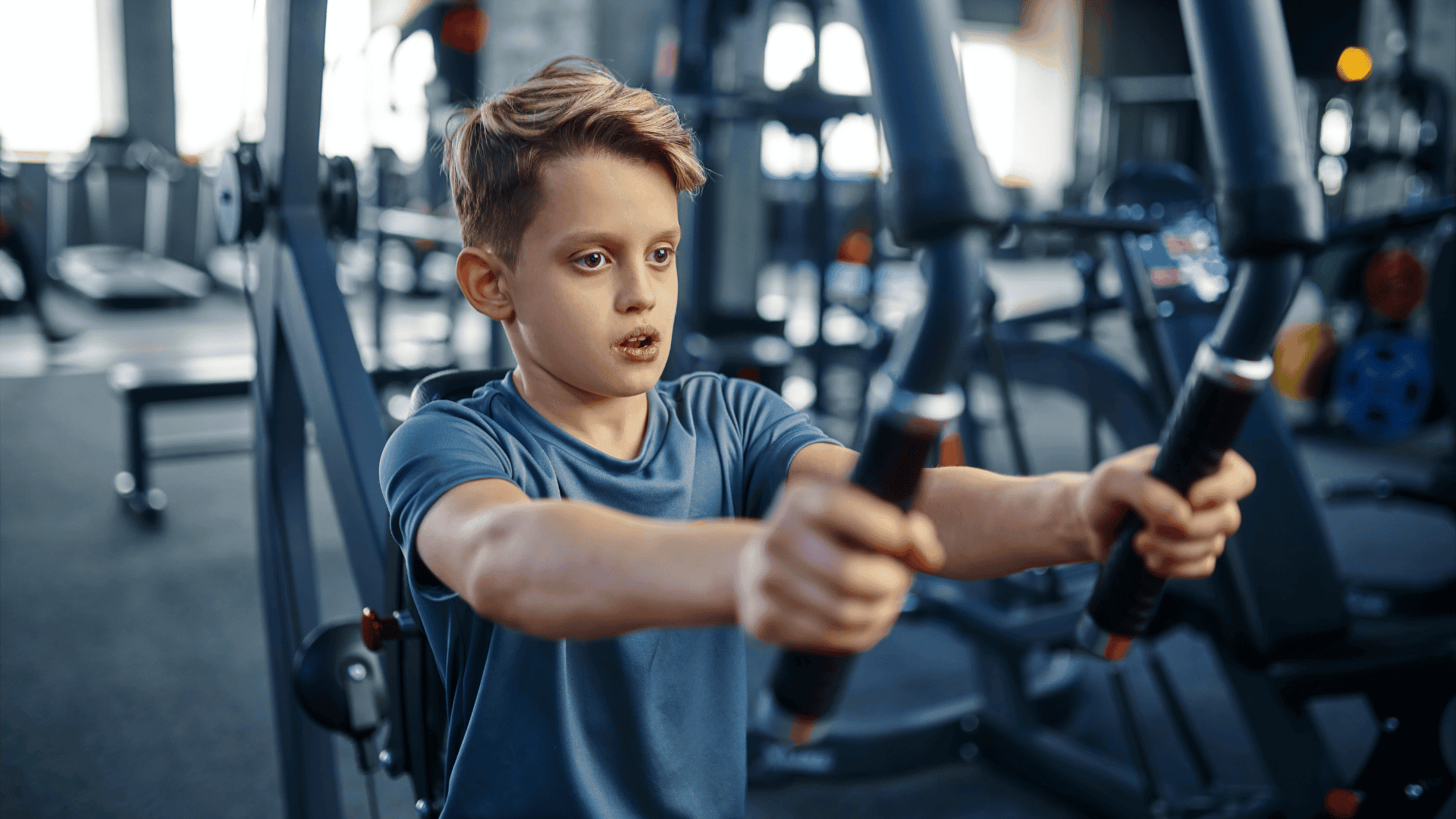
Goal: Learn how to use machines properly and build a strong foundation
Warm-Up (10 minutes):
- Easy cardio on the treadmill, bike, or rower
- Keep the pace light and steady. This helps increase blood flow and prepares your muscles
Strength Circuit:
Do 3 sets of 10 repetitions for each machine. Rest 30 to 45 seconds between sets.
- Chest Press Machine
Sit with your back against the pad, grip the handles, and press forward until your arms are straight. Return slowly. Focus on smooth movement. - Seated Row Machine
Grab the handles and pull them toward your chest, keeping your elbows close to your sides. Squeeze your shoulder blades, then release slowly. - Leg Press Machine
Place your feet shoulder-width apart on the platform. Push until your legs are straight (but not locked), then return slowly with control. - Leg Extension Machine
Sit with the pad just above your ankles. Extend your legs to lift the weight, then lower slowly. This strengthens your quads. - Shoulder Press Machine
Start with the handles at shoulder level. Push straight up, then bring them down gently. Keep your back against the seat.
Cooldown (5 to 10 minutes):
- Stretch major muscle groups: quads, hamstrings, calves, chest, and shoulders
- Hold each stretch for 30 seconds. Breathe steadily.
Wednesday: Home Circuit or Active Sport
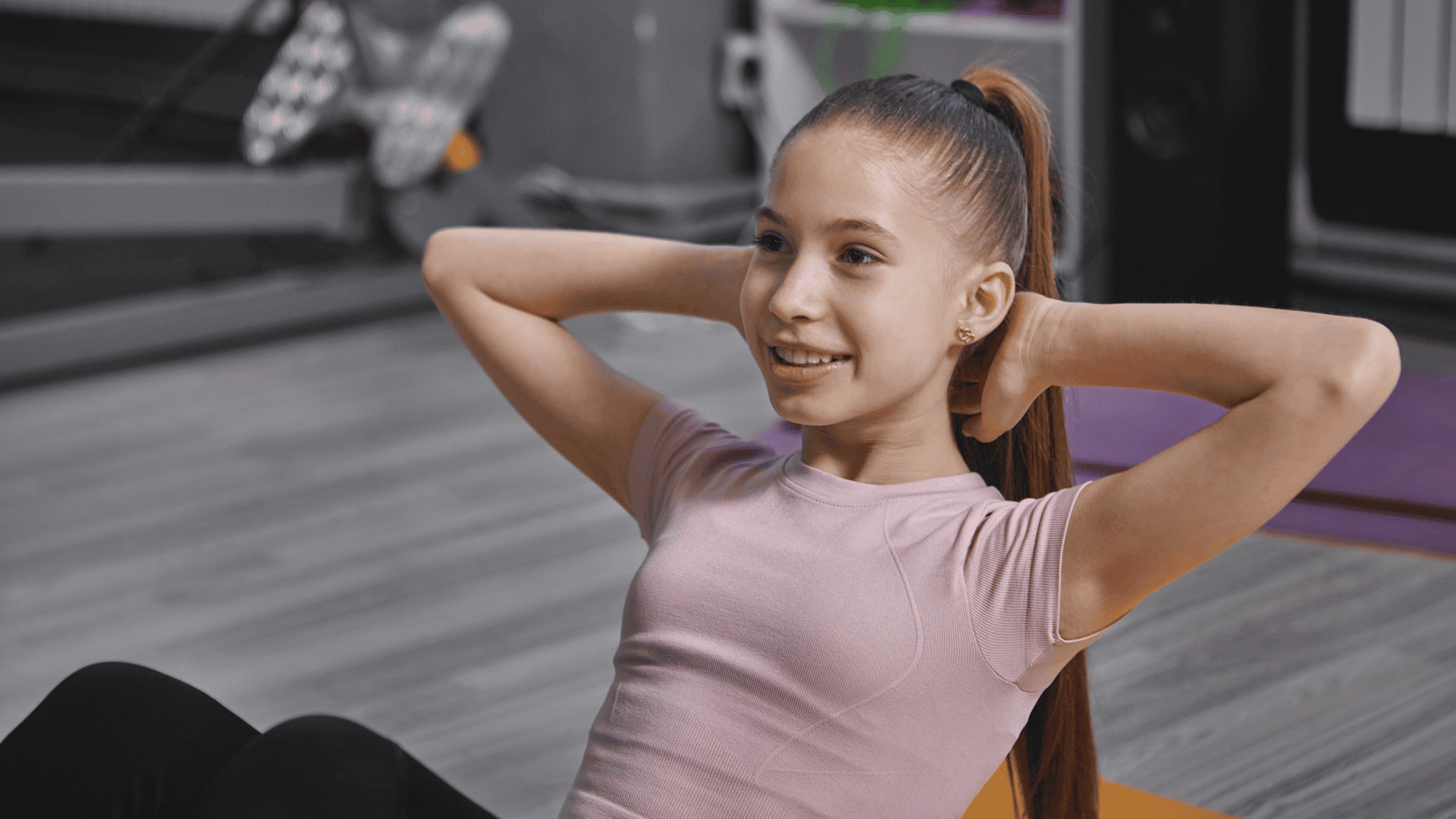
Goal: Stay active between gym days using bodyweight moves or light sport
You can:
- Play a sport at school like soccer or basketball
- Go for a short bike ride
- Or do this home workout:
Bodyweight Home Circuit (3 rounds):
- 10 push-ups (do them on your knees if needed)
- 10 squats (sit back like you’re going into a chair)
- 10 sit-ups or crunches
- 30-second plank hold
Rest 30 seconds between exercises and 1 minute between rounds.
This keeps you moving without overloading your muscles. You’ll feel stronger and more refreshed the next time you’re in the gym.
Friday: Progress to Free Weights
Goal: Apply what you’ve learned using dumbbells and bodyweight
Warm-Up (5 minutes):
- 2 minutes of steady bike or jogging
- 30 seconds of sprinting
- Repeat cycle 3 times
Strength Circuit:
Do 3 to 4 sets of each exercise. Reps vary slightly depending on the movement. Use light dumbbells first and only increase when the reps feel easy.
- Dumbbell Deadlift (4×10)
Hold a dumbbell in each hand. Keep your back flat, push your hips back, and lower the weights down your legs. Then stand tall by pressing through your heels. - Dumbbell Squat (4×10)
Hold a dumbbell at your chest. Keep your feet shoulder-width apart and lower into a squat. Push back up through your heels. - Dumbbell Overhead Press (4×12)
Press dumbbells from shoulder height to above your head. Lower with control. Keep your core tight to avoid leaning back. - Dumbbell Bench Press (4×8)
Lie on a bench or the floor. Press the dumbbells straight up, then lower slowly. This builds upper-body strength and stability. - Assisted Pull-Ups or Lat Pulldown (4×8)
Use a machine if pull-ups are too difficult. Pull your body or the bar toward your chest while keeping your elbows close. - Bench Dips (4×10)
Place your hands on a bench behind you. Lower your body until your arms are bent, then press back up. This targets the triceps.
Cooldown (5 to 10 minutes):
- Stretch all areas you trained, especially legs and shoulders
- If you’re growing quickly or feeling stiff, focus on flexibility to stay mobile
This 3-day gym structure helps teens build strength safely without getting overwhelmed. It also teaches the habit of starting with form first before increasing weight.
In the next section, we’ll explore how to keep moving on the other days of the week with light, fun cardio ideas.
Weekend Workout & Fun Activity Ideas for Teens
Strength workouts are important, but they’re only part of the bigger picture.
Staying active throughout the week helps you build endurance, feel better mentally, and meet the 60-minute daily activity goal recommended for teens.
Weekends are a great time to move in ways that feel less like “exercise” and more like fun.
These activities still challenge your heart, muscles, and coordination, but without the pressure of sets or reps. You can do them alone, with friends, or with family.
Saturday: Fun Activities That Doesn’t Feel Like a Workout
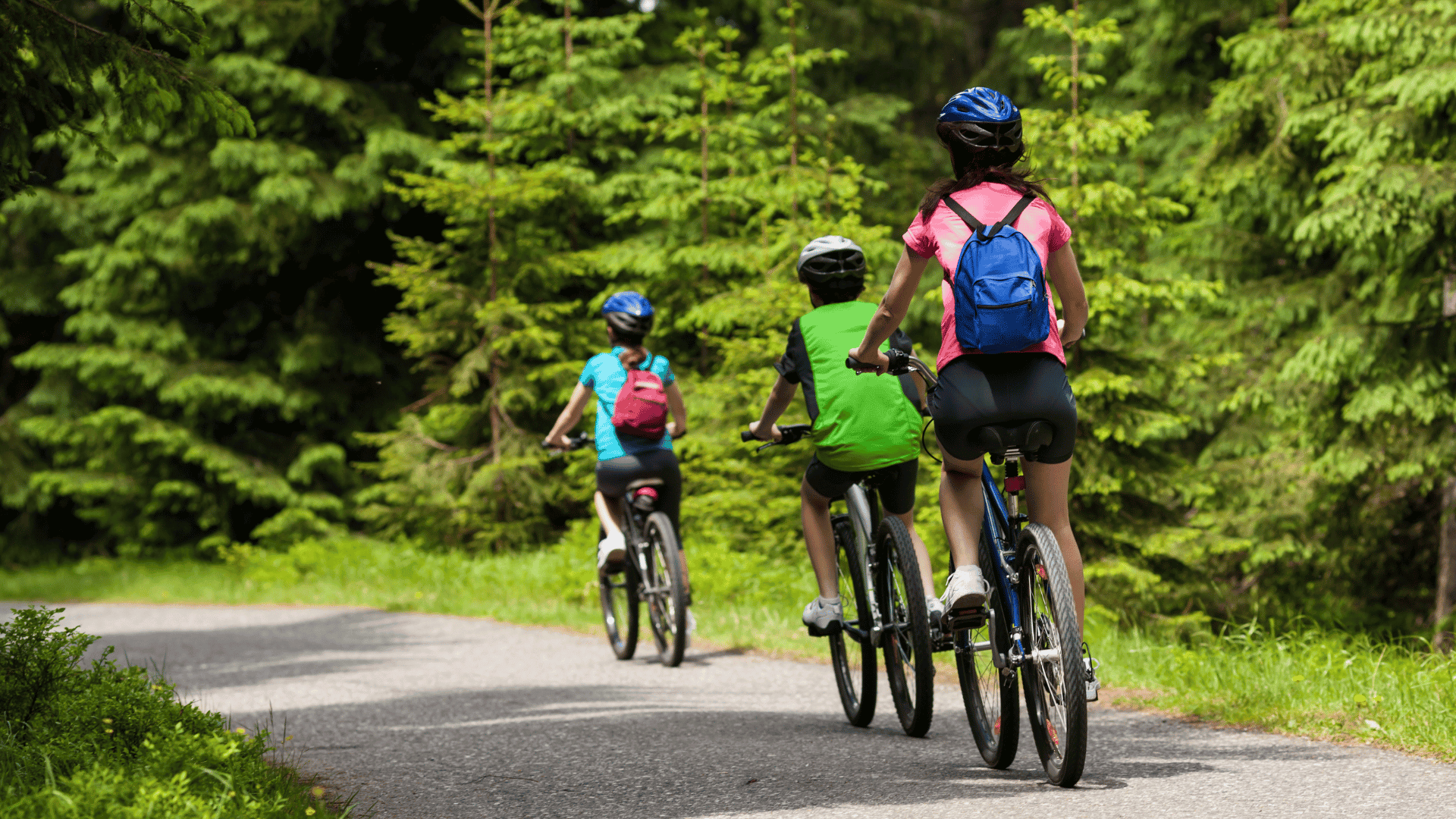
Choose something you enjoy that gets your body moving for 45 to 60 minutes. No gym required.
Ideas to try:
- Bike ride around your neighborhood
Find a route that has a mix of uphill and flat areas. Keep a steady pace, and wear a helmet for safety. - Hike or walk a nature trail
Walking on uneven ground builds leg strength and balance. Bring water and enjoy the scenery. - Dance practice or freestyle dancing at home
Put on your favorite playlist and move around. You’ll work up a sweat before you know it. - Skateboarding, scootering, or rollerblading
These help improve balance, coordination, and core strength. - Pick-up game with friends
Shoot hoops, play soccer, or join a local park game. Sports are a great way to get cardio without overthinking it.
The goal on Saturday is to move without a strict plan. Keep it relaxed and enjoyable, especially if your gym sessions during the week were more structured.
Sunday: Full Rest or Light Recovery
Your muscles grow and repair when you rest, not just when you train. That’s why Sunday is your day to unplug, recharge, and let your body catch up.
Two ways to approach Sunday:
- Full rest
No workouts. Sleep in, stay off your feet when possible, and drink plenty of water. - Active recovery
If you’re feeling a little stiff, a short walk or gentle stretching can help you feel better by Monday.
Optional recovery ideas:
- 10 to 15 minutes of light yoga
- Easy stretching session with music
- Foam rolling or a massage ball for tight areas like calves or back
You don’t need to “earn” your rest. Recovery is part of the plan, not a break from it. This helps you show up stronger for next week’s workouts and keeps your motivation high.
Warm-Up and Cool-Down Basics
Every workout should start with a warm-up and end with a cool-down.
These steps may seem small, but they are essential for staying injury-free and feeling good after exercise. Warming up helps your muscles get ready to move, while cooling down helps them relax and recover.
To warm up, you only need five to ten minutes. The goal is to raise your heart rate and get your joints moving.
Think of it as a signal to your body that it’s time to train. A good warm-up can include arm circles, leg swings, high knees, and a few slow squats.
These are called dynamic movements, which means you’re not just holding one position. Instead, you’re gently moving through a range of motion to prepare your muscles and joints.
Once you’ve finished your workout, your body needs time to reset. This is where the cool-down comes in.
After training, your heart is pumping and your muscles are tight. Stretching helps bring everything back to a resting state.
A good cool-down includes static stretches, which are stretches you hold for 30 seconds each.
Focus on your legs, hips, chest, shoulders, and back. These areas do the most work during full-body workouts.
If you’re not sure where to start, try standing on one leg and pulling the opposite ankle toward your glutes to stretch your quads.
For hamstrings, sit down and reach for your toes with one leg out. For your chest, find a wall, place your palm on it, and slowly turn your body until you feel a stretch across your chest and shoulder.
Never skip these steps. Warm-ups prepare you for safe movement. Cool-downs help you recover faster and reduce soreness.
Once they become part of your routine, they’ll feel just as natural as the workout itself.
Common Mistakes to Dodge

Even the best workout plan can get derailed by a few simple missteps. These beginner mistakes are easy to fall into, especially when you’re just starting out.
The good news is, they’re just as easy to fix.
The first mistake is skipping your warm-up. When you jump straight into lifting or cardio without preparing your body, you raise your risk of injury. Just five minutes of light movement can make a huge difference.
Another mistake is trying to lift too heavy too soon. It might feel like progress, but pushing past your limits before you’re ready often leads to bad form or joint pain.
Stick with lighter weights until every rep feels solid and steady.
Some teens believe more is better, so they work out every single day. But without rest, your body can’t recover or grow stronger. Muscles need time off to rebuild.
At least one or two rest days a week will actually help you get better results.
Lastly, don’t ignore the basics like sleep and hydration. If you’re always tired, sore, or feeling weak, chances are you’re not giving your body what it needs outside the gym.
Aim for enough sleep and drink water consistently throughout the day.
Steer clear of these habits and you’ll build a routine that’s both safe and sustainable.
Build Strength That Lasts
Starting a teen workout plan is more than just lifting weights or breaking a sweat. It’s about building a strong foundation for your body, your habits, and your mindset.
This plan gives you the structure to train safely, the freedom to make it your own, and the tools to keep going even when life gets busy.
You don’t need to be perfect. You just need to show up. Use the machines when you’re starting out. Try new exercises when you’re ready. Listen to your body. Rest when you need it. Eat foods that fuel you.
And most importantly, be patient. Real strength comes from consistency, not shortcuts.
Whether you’re training at the gym, moving at home, or staying active with friends on the weekend, this teen workout plan is your starting point.
It’s built to help you feel stronger, move better, and grow more confident, one workout at a time.
Ready to begin? Save this plan, show up three times a week, and give your best effort.
That’s all it takes to create lasting change.
Start Strong With a Plan That Works
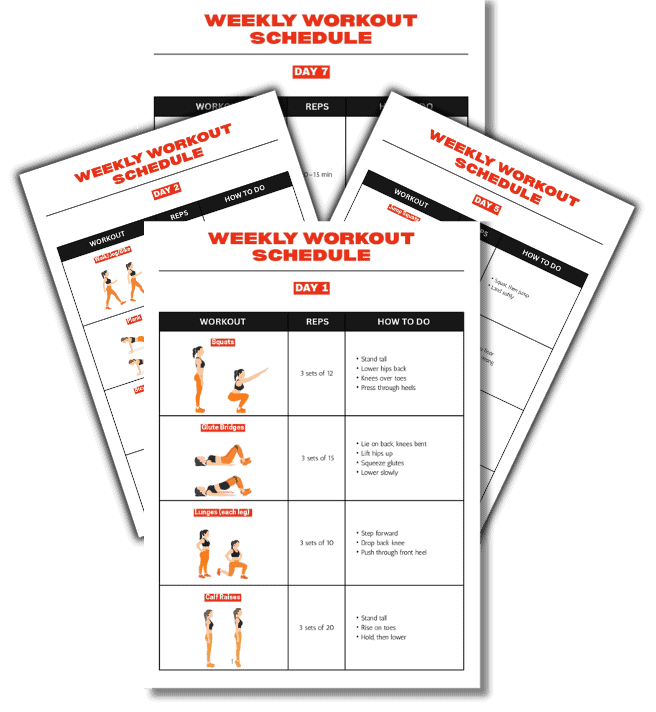
Getting active as a teen doesn’t have to be complicated.
The Free Weekly Workout Schedule gives you a safe, beginner-friendly routine that’s easy to follow, whether you train at home or in the gym.
With clear workouts laid out, you’ll build strength, stay consistent, and feel more confident every week.
Frequently Asked Questions
1. How many days a week should a teen work out?
Three strength training sessions per week is ideal for most teens. This gives the body time to recover between workouts while building consistency. On the other days, staying active with sports, walking, or fun movement helps meet the daily goal of 60 minutes.
2. Is lifting weights safe for teenagers?
Yes, lifting weights is safe when done with proper form, light weights, and supervision if needed. Starting with machines or bodyweight exercises helps build control and teaches good habits before progressing to heavier free weights.
3. What if I don’t have access to a gym?
You can follow a modified version of the plan at home using bodyweight movements, resistance bands, or a backpack with books as added weight. The key is doing full-body movements with good form and staying consistent.
4. How do I know when to add more weight?
If you can complete all your sets and reps with good form and still feel like you could do more, it’s a good sign to increase the challenge. Add a small amount of weight or a couple of extra reps, but always make sure your technique stays solid.
5. Do teens need supplements to gain muscle?
No, most teens do not need supplements. Getting protein from whole foods like eggs, chicken, yogurt, beans, and nuts is enough. If you’re eating balanced meals and staying hydrated, your body will have what it needs to grow stronger.
